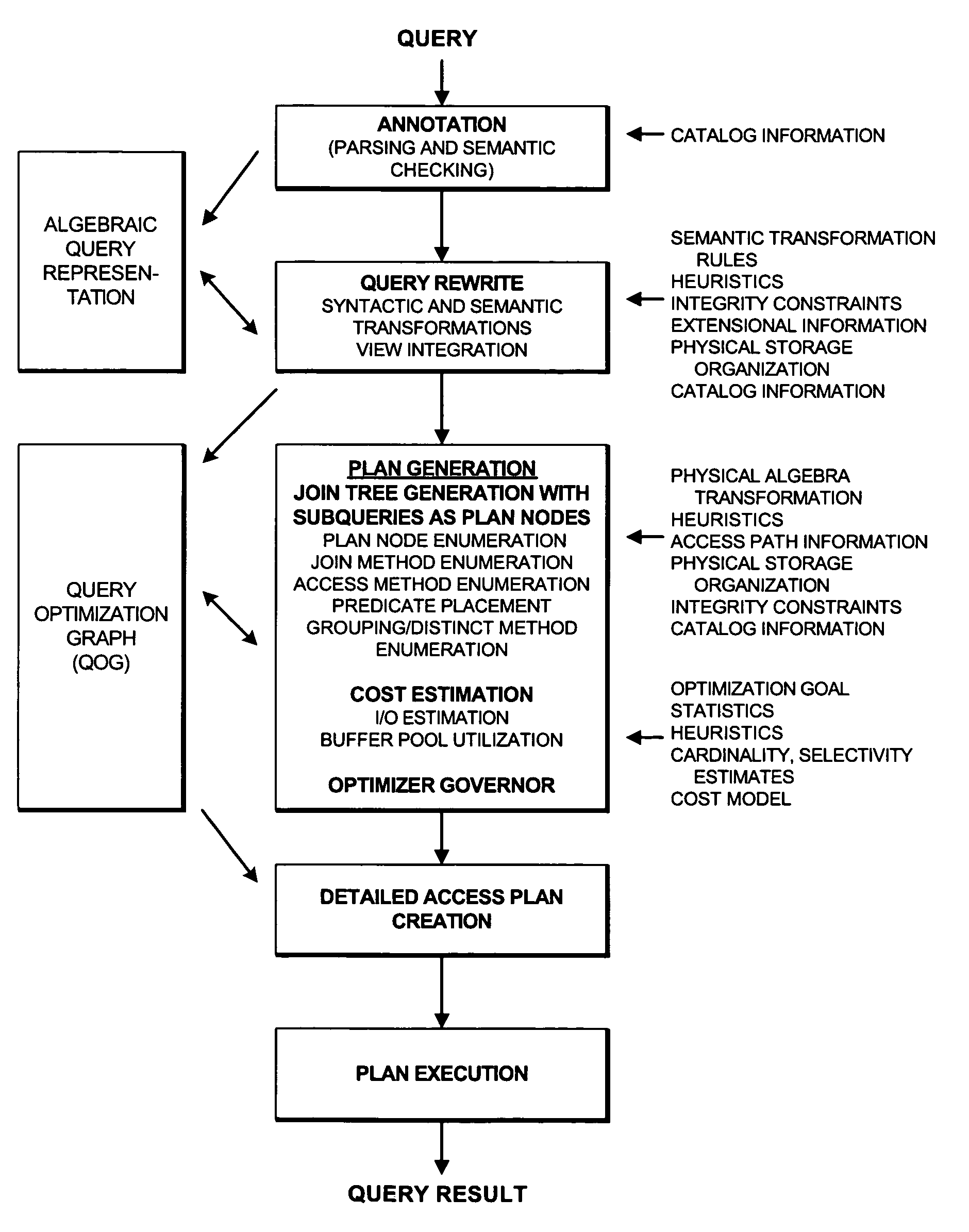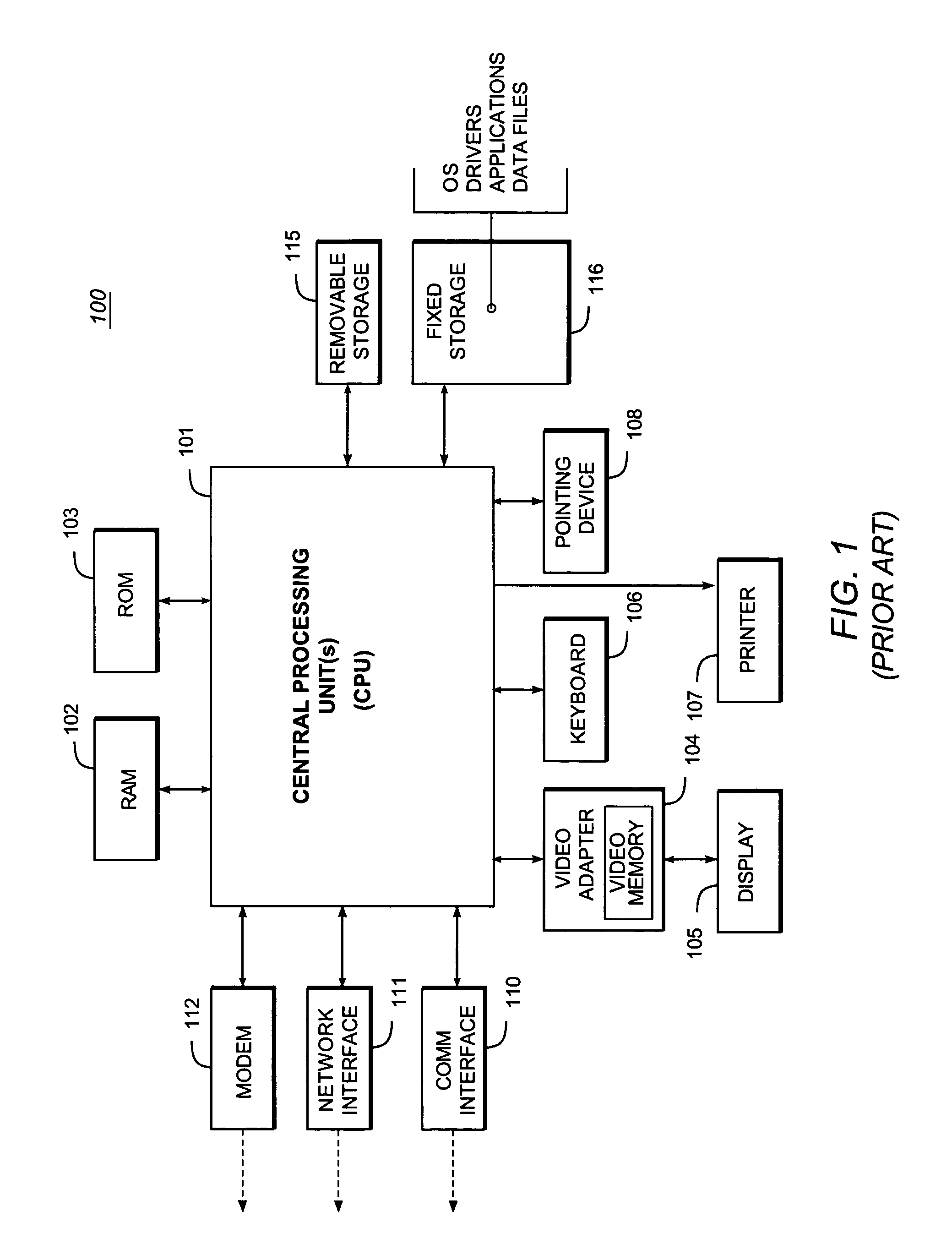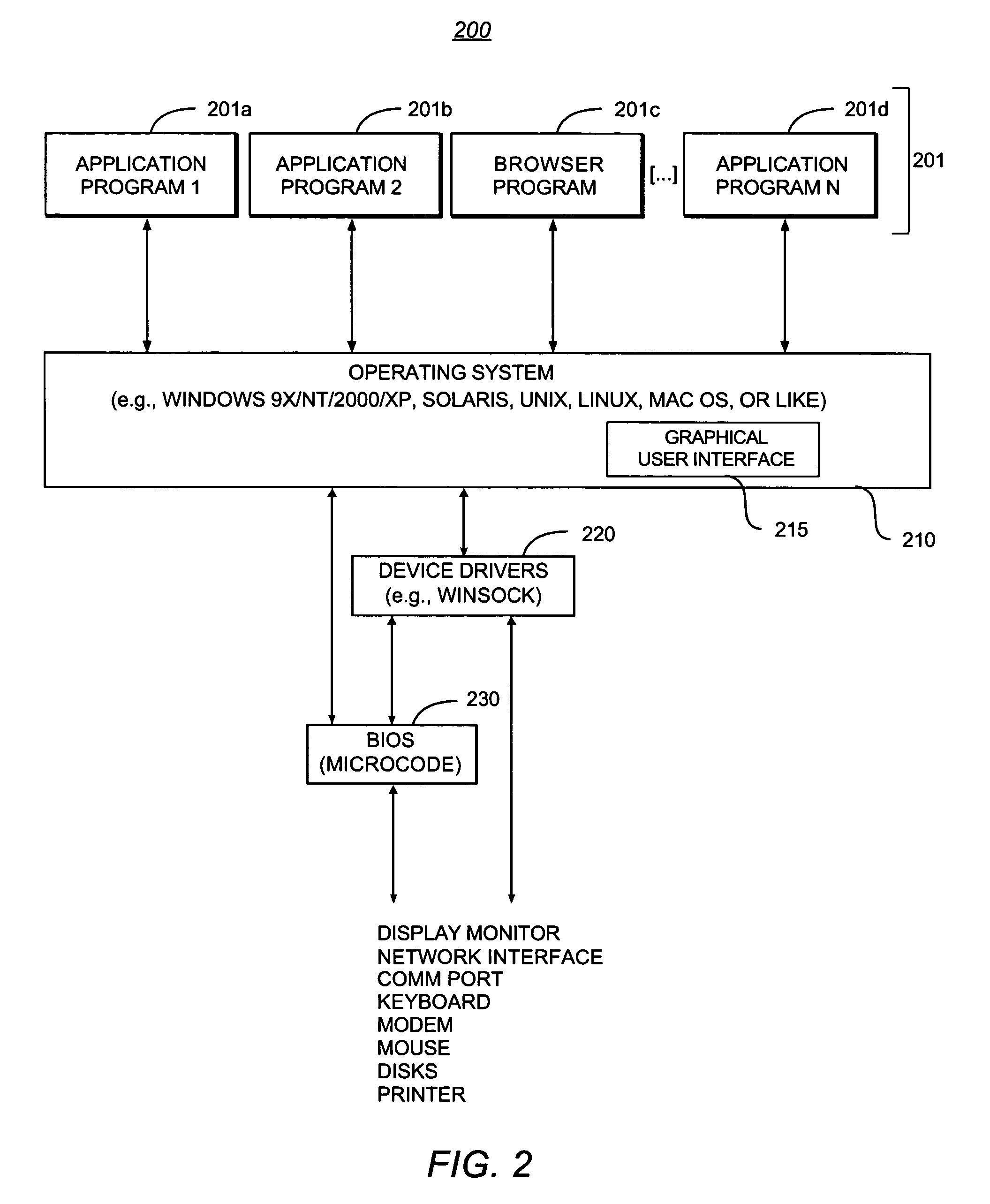System and methodology for cost-based subquery optimization using a left-deep tree join enumeration algorithm
a technology of left-deep tree join and optimization method, applied in the field of information processing environment, can solve the problems of significant increase in memory required and significant reduction of memory required, and achieve the effect of favorable execution cos
- Summary
- Abstract
- Description
- Claims
- Application Information
AI Technical Summary
Benefits of technology
Problems solved by technology
Method used
Image
Examples
example 1
[0104]For a predicate of the form p=R.X>T.y+Z.w, only one hyperedge is defined in Esj: e=({qR}, {qT, qZ}, p).
[0105]FIGS. 5A-D illustrate Query Optimization Graph (QOG) representations of the several sample table expressions that are described below.
example 2
[0106](TpT,RR⟶PR,PP)⟶Pp,SS.
For the above table expression, the set of quantifiers corresponding to the base tables is {qT, qR, qP, qS}. FIG. 5A is a graphical representation of a QOG hypergraph for the table expression shown in this example.
[0107]The subplans in V are defined as follows:
S2=({qP}, PR,P, ∅), S1=({qS}, pP,S, ∅)
e1=({qT, qR}, PT,R), e2=({qR}, S2), e3=({S2}, S1).
S0=({qT, qR, S1, S2},PT,R, {e1, e2, e3}).
Hence, V={qT, qR, qP, qS, S0, S1, S2}. E={e1, e2, e3}.
[0108]Now consider the following Example 3:
example 3
[0109]TpT,RR⟶Pr,P(P⟶Pp,SS).
For this Example 3 table expression, the set of quantifiers corresponding to the base tables is {qT, qR, qP, qS}. The subplans in V are defined as follows:
S1=({qS}, pP,S, ∅), S2=({qP}, pR,P, {e3}) where e3=(qP, S2),
S0=({qT, qR, S2}, PT,R, {e1, e2}).
V={qT, qR, qP, qS, S0, S1, S2}. E={e1, e2, e3}, where e1=({qT, qR}, pT,R), e2=({qR}, S2).
[0110]The graphical representation of a QOG hypergraph Q= for the above table expression (Example 3) is illustrated at FIG. 5B. Note that the above two table expressions (Example 2 and Example 3) are not equivalent if the ON conjunct pp s is null-tolerant (e.g., pP,S=(P.X IS NULL or P.X=S.X)). This semantic difference is captured in the two very different QOG representations of the two table expressions illustrated at FIG. 5A and FIG. 5B, respectively.
[0111]Definition 5: The “full-outerjoin hypemode” of a fill outerjoin is the set of all quantifiers that appear in the right hand side or a left hand side of a full out...
PUM
 Login to View More
Login to View More Abstract
Description
Claims
Application Information
 Login to View More
Login to View More - R&D
- Intellectual Property
- Life Sciences
- Materials
- Tech Scout
- Unparalleled Data Quality
- Higher Quality Content
- 60% Fewer Hallucinations
Browse by: Latest US Patents, China's latest patents, Technical Efficacy Thesaurus, Application Domain, Technology Topic, Popular Technical Reports.
© 2025 PatSnap. All rights reserved.Legal|Privacy policy|Modern Slavery Act Transparency Statement|Sitemap|About US| Contact US: help@patsnap.com



